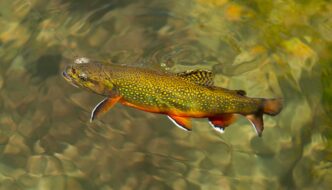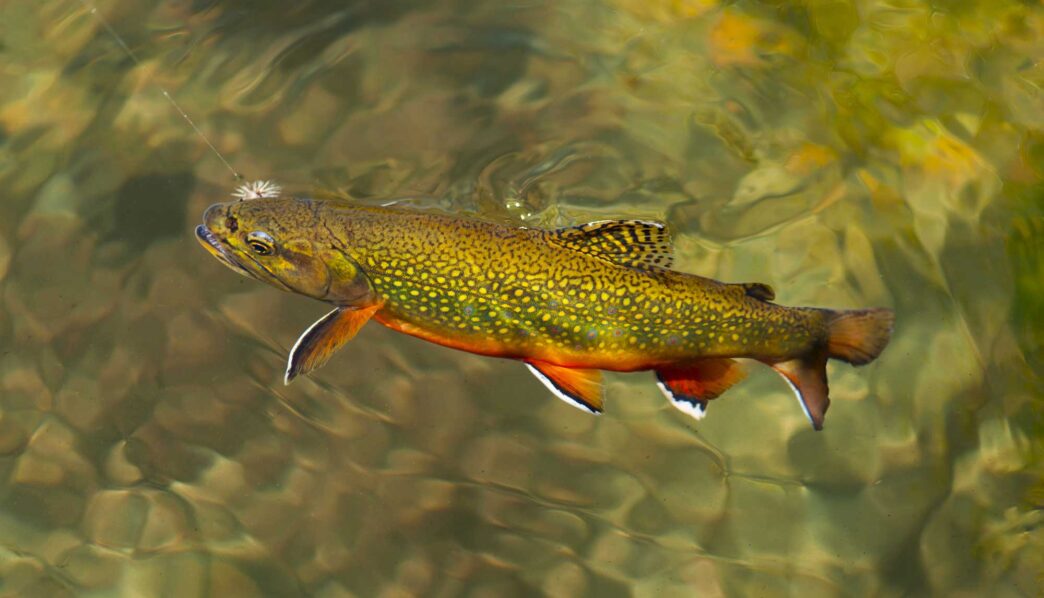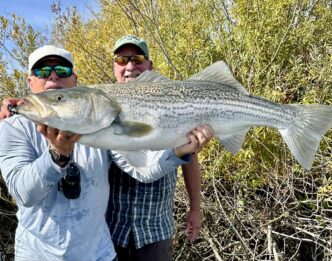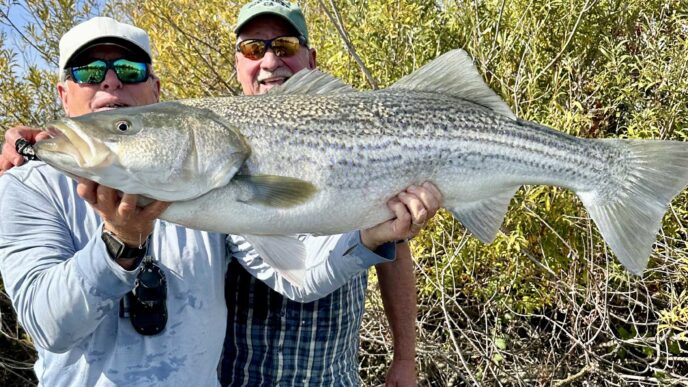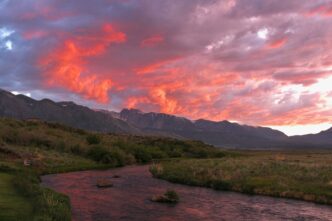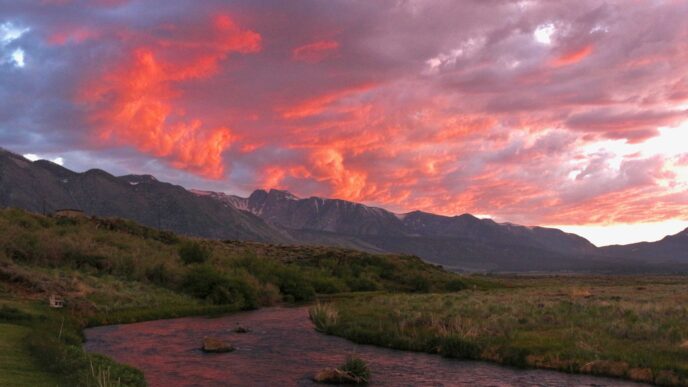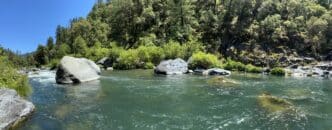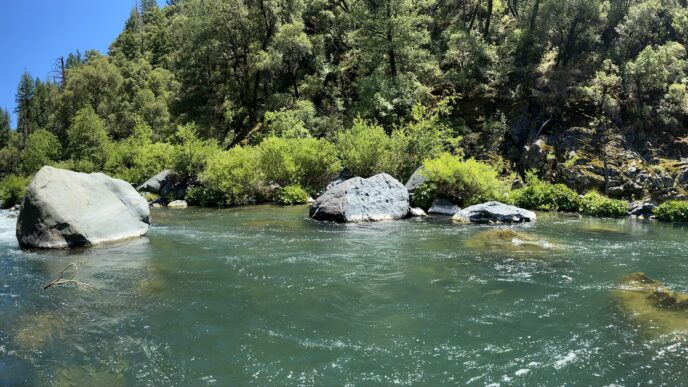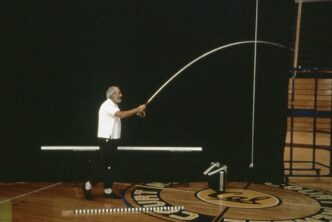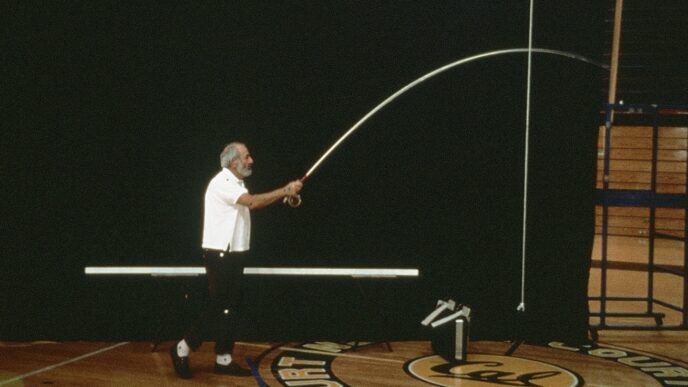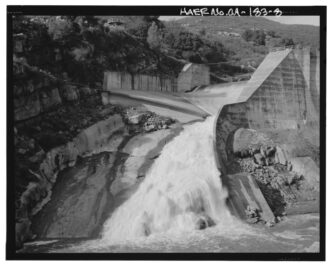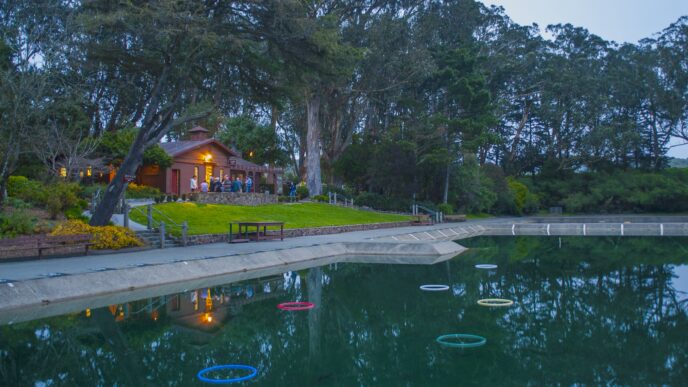As a dry fly enthusiast, I count James Ogden among my fly fishing heroes. He sold tackle in Cheltenham, England and caught his first trout on a dry in 1839 on the River Wye, a lovely stream along the Welsh border that Wordsworth celebrated in “Tintern Abbey.” Wet flies were the standard choice at the time, but Ogden had no luck with any he tried, so he switched to a dry he’d tied. He noticed the trout rose readily if he presented it “without a ripple,” meaning without any drag.
No one had written about the drag factor before. Ogden was probably the first to catch a trout on a dry as well, but he kept quiet about it until years later. The fly fishers sharing his beat envied his success. They attacked him and kicked him off the stream. Tradition still ruled on the Wye as it did at the prestigious Houghton Club, whose members fished in fashionable top coats, relying on their servants to scour the banks for live insects during a mayfly hatch. The servants delivered them in zinc boxes.
It’s quite possible Wordsworth fished the Wye, too, although not with flies. He carried a “rod and line” on his rambles with his sister, Dorothy, and his pal, Samuel Taylor Coleridge, who never shut up despite his intake of opiates. For these folks, a walk of ten or fifteen miles barely qualified as a hike. In his great biographical poem, “The Prelude,” Wordsworth wrote of looking for wild trout “by rocks and pools” and in hidden mountain streams, a pleasure he never forgot.
James Ogden’s story is instructive. Fly fishers tend to be conservative types. We find a way of doing things and stick to it, often to our detriment. We’re creatures of habit and don’t like change. An innovator like Ogden is frequently met with resistance, if not outright derision, even though they improve and advance the sport.
Take the case of William Stewart, a Scot who published his influential, The Practical Angler, in 1857 at twenty-four. His youth worked against him, at least among traditionalists, who took him for upstart and dismissed the core truth of his observations. You’ll catch more trout, argued Stewart, if you fish upstream rather than down.
“Ninety-nine anglers out of a hundred fish down with the artificial fly,” he conceded, but he added, “They never think of fishing any other way, and never dream of attributing their want of success to it.” Plainly put, they were too lazy.
His reasons for casting upstream were sound. The angler’s invisible to the trout, and the drift of the fly looks more natural. It’s easier to set the hook, and you disturb the water less if you play a fish downstream. But the critics attacked Stewart as they did Ogden, although only in print. His chief antagonist was H. Cholmondeley-Pennell, who challenged Stewart’s views in his book, The Modern Practical Angler, and stole his title almost verbatim.
Pennell’s tone was gratuitous. Surely Stewart was a nice kid, but he got it all wrong. Fishing upstream was always a mistake, forgivable—if regrettable—only in a strong wind. He dismissed Stewart’s belief in the effectiveness of short casts and short, single-handed rods, vowing to use his long, double-hander to the grave. To establish his credentials, he let it drop that he’d fly fished “on many of the streams in the three kingdoms.”
I have no proof Pennell belonged to the Houghton Club, but it’s a fair bet. Stewart was furious with him, largely because readers trusted the well-connected Pennell and accepted his opinions as gospel. He fired off an angry letter to The Field, the day’s leading angling journal, and Pennell felt compelled to reply in kind. Their back-and-forth ran to 25 or so pages before the editor pulled the plug.
“We do not see the possible use of permitting this controversy to continue,” he wrote, “and therefore we now close it.”
But Stewart had still more to say. He convinced his publisher to issue the letters in book form as A Caution to Anglers, comparing his text with Pennell’s almost word-for-word. “Fishing upstream is much more difficult,” he concluded, and “the only way to gain any eminence as a fly fisher.”
Not every trailblazer suffers as much as Stewart. Cornelia Crosby became the first woman to achieve celebrity as a fly fisher, and she did it with a minimum of fuss. She was too forceful a personality to deny. Born in an isolated town in Maine’s north woods, she learned to hunt and fish in her teens. She was astonishingly gifted at both, impressing the neighbors who home-schooled her. In essence, she was a natural.
“I am a plain woman of uncertain age, standing six feet tall in my stockings,” she once wrote. “I scribble a bit for various sporting journals, and I would rather fish any day than go to heaven.”
Cordelia Crosby
It was the scribbling that made her famous. Though other women in Maine fished and hunted, no one did it with Crosby’s skill and panache. She earned bragging rights as the state’s first licensed guide and promoted its virtues to “rusticators” seeking a wilderness escape. She traveled from one resort to the next to gather the material for her articles, arriving in a stagecoach with a birch bark canoe lashed to the top.
One of her editors took to calling her Fly Rod, and her articles, widely circulated, ran under the title “Fly Rod’s Notebook.” By 1893, she was known to most fly fishers in the U.S. That summer, “the best and happiest” of her life, she caught and released over 2,500 trout. Her personal record for a single day was 200 or so, and she held the state record for most trout caught in the shortest time – 52 in 44 minutes.
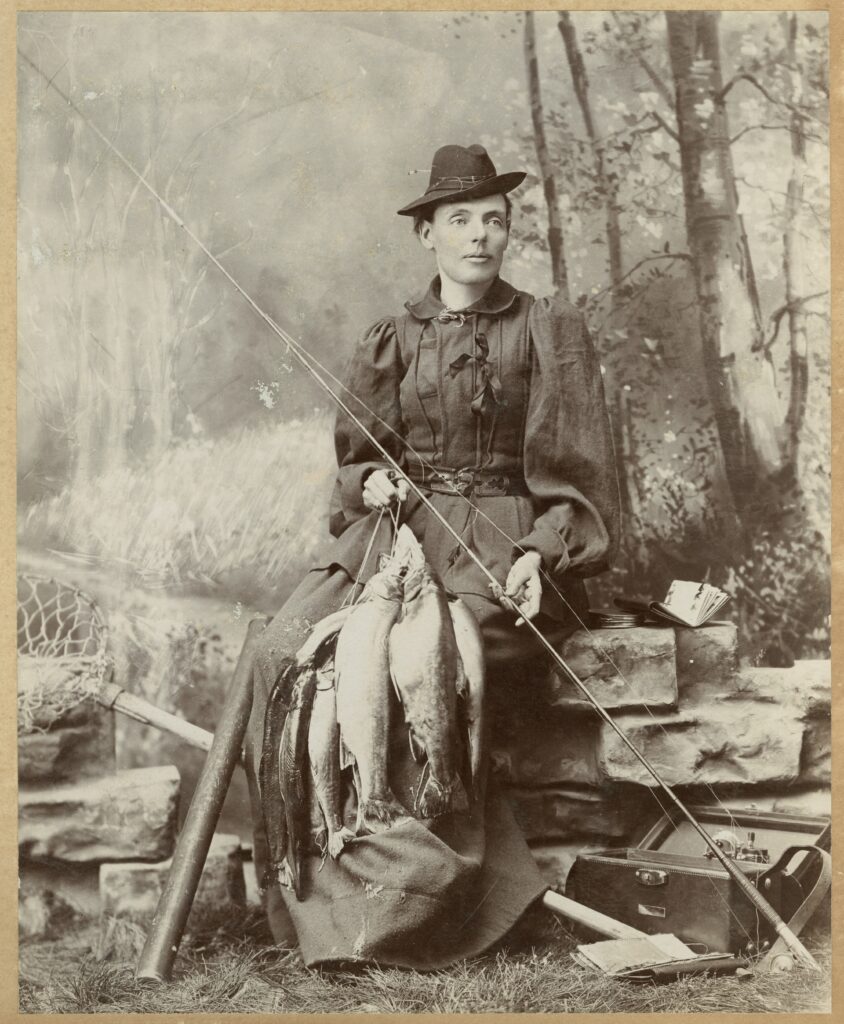
Fly Rod was no slouch when it came to publicity. She fished a high-end bamboo rod, custom-made. She owned a solid gold reel, too, a gift from an admirer. She hunted bear and caribou with her Winchester and challenged her friend Annie Oakley, Wild Bill Hickok’s sidekick, to a shooting match. Her fame peaked in 1896 when the Maine Central Railroad hired her to encourage rail travel and booked her to appear at a big sportsmen’s exposition at Madison Square Garden.
Crosby made the most of it. Her exhibit featured an authentic log cabin decorated with the stuffed heads of stags. The interior was hung with bear and wildcat skins, and there were live tanks filled with Maine trout and lobsters. Two guides worked the crowd while Fly Rod gave advice and casting lessons. She wore a Paris-inspired “hunting costume” of green leather and a jaunty red-and-green hat. The reviewers called her exhibit the “best in the show.”
Although Crosby was never an overt feminist, she recognized her importance as a role model. No doubt she’d be delighted to witness the extent of her legacy in California. It’s not unusual to find a woman beating the gents to a choice riffle or pool anymore. Fly fishing clubs for women are cropping up all over the state—the Ladies of the Lost Coast (San Francisco), Sierra Fly Girls (Truckee), and Women of the Sierra Pacific, for example.
“Why should a woman not do her fair share of tramping, hunting, and fishing and ask no odds of the men?” Fly Rod once asked. “The time is past, I thank Providence, when it was thought unladylike for a woman to be a good shot or a skillful angler.”



